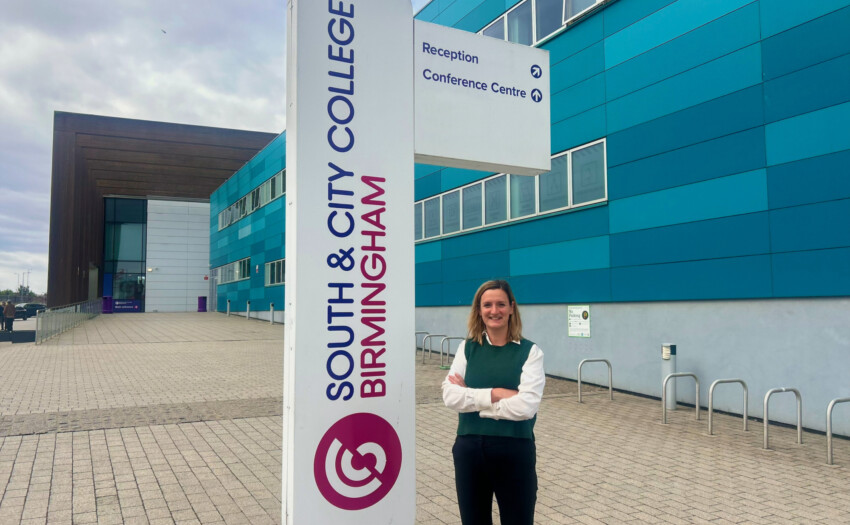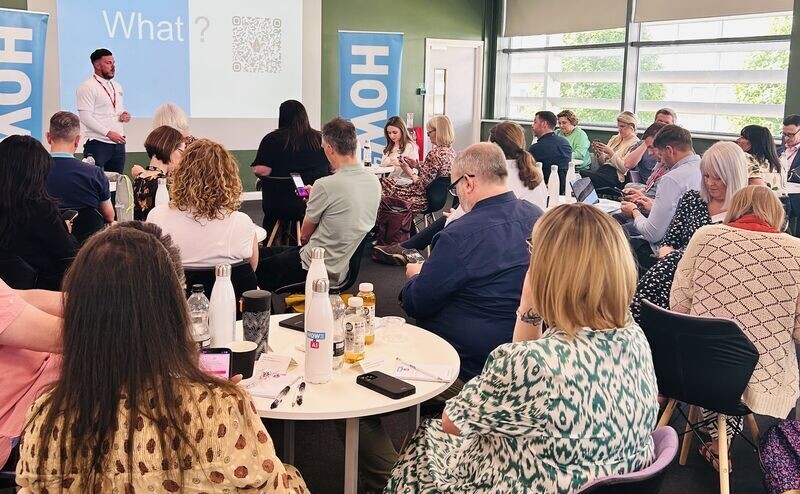Creating a Learning Culture: The Shift That’s Elevating Teaching Excellence at WLC
By Sabeena Shah, Director of Quality, West London College

When my CEO recently turned to me and said, “Something’s different at WLC — what changed?” I had to stop and take it in.
We had been working towards this for over a year — building a CPD model that was teacher-driven, responsive, and deeply embedded into practice. But in that moment, I realised something important: the shift wasn’t just happening. It was now palpable.
CPD at WLC had moved beyond being just about scheduled training sessions. Teachers were talking about techniques in the corridors, inviting us into their lessons, and actively seeking out new strategies — not because they had to, but because they wanted to.
And it’s making a difference. In our most recent survey, 93.7% of learners strongly agreed that teaching at West London College is good or better. That level of strong agreement is rare in learner feedback — and for me, it really shows how deeply the change is being felt in the classroom.
The 360 CPD model we had implemented — one that combined formal training with teacher-led learning and real-time support — wasn’t just working. It was becoming part of who we are.
Building a 360 CPD Model That Works
For CPD to be truly effective, it can’t be a one-size-fits-all approach. Staff need different types of support at different times, depending on their needs and their teaching context.
At WLC, we built a 360 CPD model that ensured every educator — whether in-house or subcontracted — had access to high-quality, ongoing professional development. This included:
● Face-to-face specialist training
● Bite-sized digital resources for on-the-go learning
● Lunchtime drop-ins and peer-led CPD
● Teacher-led action research groups (Teacher Triangles)
● A real-time feedback loop, where support is provided when it’s needed, not weeks later
HOW2 wasn’t just an add-on in this model — it was a key enabler.
Where HOW2 Fits In: Instant, Personalised Support
One of the biggest challenges in staff development is that support often comes too late. A teacher identifies a problem in their classroom today, but the next CPD session might not be for weeks.
That’s where HOW2 made a huge difference. When a teacher asks for help with questioning techniques or classroom management, we don’t just discuss it — we send them a HOW2 technique immediately. This real-time, personalised approach:
● Empowers teachers to take action instantly
● Helps staff see CPD as something relevant to their daily challenges
● Creates a culture of continuous improvement, rather than one-off training days
HOW2 also provided consistency across the college. Whether it was a new teacher, an experienced practitioner, or a subcontractor, everyone had access to the same evidence-based techniques, structured in a way that made implementation easy.
And that consistency is what’s driving the cultural shift.

Tackling College-Wide Improvement — Without Overload
One of the biggest challenges in a Requires Improvement college is that there isn’t just one problem to fix — there are dozens.
You can’t go into lessons and say, “Right, here’s the one thing we need to improve.” Every class, every teacher, every subject has different challenges — some need support with questioning techniques, others with behaviour management, and others with embedding cognitive science strategies. This is where HOW2 made a huge difference.
Instead of spending months manually sourcing research, developing resources, and delivering bespoke training on every possible issue, HOW2 gave us a full suite of evidence-based techniques — ready to go.
We could quickly distribute targeted techniques to staff, so they could start applying them immediately. This allowed us to get teachers actively engaged in improvement, rather than waiting for the next scheduled CPD session. And once we had that baseline in place, we could focus on deeper, more strategic interventions.
When we introduce CPD, we need to be certain that it’s the right decision, that it’s research-backed, and that it will genuinely support teachers. Staff will hold us accountable — if we offer CPD that doesn’t work, they won’t engage. HOW2 gave us the confidence that what we were providing was solid, evidence-based, and immediately applicable.
And that confidence has translated into real progress — our teaching and learning quality, once below target, now exceeds the college’s benchmark of 85% “good or better.”

CPD Without Borders: Bringing Subcontractors Into the Learning Community
One of the biggest transformations has been how we engage our subcontractors. Historically, external staff didn’t always have the same CPD opportunities as in-house teams. We were told by the board that we needed to do more for them — and they were right.
So we did.
With access to HOW2 and our wider CPD model;
● Subcontractors now engage in CPD alongside our full-time staff
● They are part of the same professional learning conversations
● For the first time, CPD is fully synchronised across WLC
And the results? 98% of teachers — including subcontractors — now say they feel supported in their professional development.

From Expectation to Engagement: The Cultural Shift
For CPD to work, it can’t be something staff passively receive — it has to be something they see value in and want to engage with. More recently, we introduced Teacher Triangles — small groups of educators who collaborate on research-based improvements in their practice. Every two weeks, they:
● Share research and insights
● Apply new techniques in their classrooms
● Observe and support each other’s development
HOW2 plays a key role in these discussions, giving staff a structured, evidence-based way to experiment with new ideas.
And the real shift?
Teachers now invite us into their classrooms — not because they have to, but because they want to share what’s working. That’s the difference between CPD being something delivered to staff and something staff take ownership of themselves.
What’s Next? Sustaining the Momentum
This isn’t about short-term change. It’s about embedding CPD so deeply into WLC that it becomes second nature. HOW2 is now woven into our policy, our training structure, and our day-to-day teaching conversations.
It’s even embedded into our observation cycle, where staff receive targeted, evidence-informed feedback linked directly to HOW2 techniques. Since implementing this model, over 90% of sessions have met or exceeded our internal lesson observation criteria.
And the difference is clear:
CPD is immediate, not delayed
CPD is embedded, not one-off
CPD is staff-driven, not top-down
At WLC, CPD is no longer about compliance — it’s about staff owning their development.
And that’s what’s driving the change.
-
To learn more about the HOW2 Platform, follow TeachingHOW2s on LinkedIn for updates and insights.






